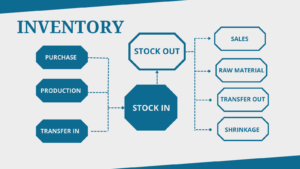Introduction to Jewellery Inventory Management
Jewellery inventory management is all about knowing what pieces you have, where they are, and how much they’re worth. Think of it like keeping track of your personal stuff but on a bigger scale for a jewellery business. Why does it matter? Because without it, you’re basically flying blind in a storm. You might have too much of something that doesn’t sell or too little of what flies off the shelves. Getting a grip on your inventory can help you avoid these pitfalls, making sure you have the right items in stock that your customers want to buy. It’s not just about numbers; it’s about smart planning. And don’t worry, it might sound a bit daunting, but with the right approach, anyone can get the hang of it.
Organizing Your Inventory: Categories and Tags
When it comes to jewelry inventory management, think basic but smart. First off, break down your inventory into clear categories. Rings, necklaces, earrings, bracelets – you get the picture. This step makes it easy to find what you’re looking for and keeps your collection from turning into a jumbled mess. Next, introduce tags for each piece. Tags can include information like material (gold, silver, platinum), gem type (diamond, sapphire), and even the occasion it suits best (wedding, casual). This way, when you or a customer is searching for something specific, it’s a breeze to pinpoint exactly what you’re after. Simple, right? Keep your jewelry organized by category and tag, and you’ll save yourself heaps of time and headache.
The Importance of Regular Stock Audits
Regular stock audits are key to successful jewellery inventory management. They ensure you always know what’s in stock, which pieces are selling fast, and which ones aren’t moving at all. This is crucial for making smart business decisions. Think about it: without regular checks, you might keep ordering a necklace that no one buys, wasting money and space. On the flip side, you could run out of your bestseller without even noticing until a customer asks for it. Regular audits help you spot these trends early, so you can adjust your stock to meet demand. Plus, they’re your first line of defense against theft or loss. When every piece of jewellery is accounted for, it’s much harder for items to go missing. In short, regular stock audits save you money, keep customers happy, and help your jewellery business run smoothly.
Leveraging Technology for Efficient Management
One can’t stress enough the power of leveraging technology for efficient jewellery inventory management. It’s about making your life simpler while ensuring your business stays on top. Start by exploring software designed for inventory management. These programs track your stock in real-time, showing what’s available, what’s running low, and what’s not moving. They can even predict trends, helping you decide what to stock up on. Then, consider using barcode systems. They make checking items in and out a breeze and reduce errors. And don’t forget about mobile apps. They let you manage your inventory on the go, ensuring you’re always in the loop. Embracing technology not only saves time but also cuts down on mistakes, keeping your business sharp and competitive.
Understanding and Managing Lead Times
Lead times play a crucial role in jewelry inventory management. Simply put, a lead time is the period from when you order your inventory to when it arrives on your doorstep. Why does this matter? Well, if you understand your lead times, you can plan better and reduce the chances of running out of stock or sitting on too much inventory. Jewelry pieces, especially custom or handcrafted ones, can have long lead times due to the intricate work involved. To manage lead times effectively, start by communicating with your suppliers. Ask them how long it typically takes for an order to be processed and shipped. This info lets you tweak your ordering schedule so you’re not caught off guard. Remember, shorter lead times mean you can adapt to trends and customer demands faster. But, always have a buffer for unexpected delays to avoid stockouts. Smartly managing lead times can save you from a lot of headaches and keep your jewelry business sparkling.
Strategies for Handling Overstock and Understock
Handling overstock and understock in your jewelry inventory is like walking a tightrope. If you have too much stock, your money is tied up. Not enough, and you miss sales. Here’s how to balance:
First, know your numbers. Track what sells and what doesn’t. Use software if you have to. It beats guessing any day.
Next, sales forecasts are your friend. Look at past sales data, especially seasonal trends, to predict future needs. It’s not perfect, but it’s better than flying blind.
Third, promotions and discounts can move overstock. But be smart. Don’t slash prices on everything. Pick items that have been sitting too long.
Fourth, flexibility with suppliers is key. Build good relationships so you can return unsold items, or adjust orders quickly without penalty.
And last, balance your range. Don’t put all your eggs in one basket with too many similar items. Variety attracts different customers and spreads the risk.
Stick to these steps, and you won’t just survive; you’ll thrive.
The Role of Forecasting in Inventory Management
Forecasting plays a huge role in how well you manage your jewellery inventory. It’s about predicting future sales to figure out how much stock you need. Without it, you could end up with too much inventory, eating up your storage space and tying up cash, or too little, missing out on sales. Here’s the deal: by looking at past sales data, trends, and even the time of year, you can make educated guesses about what’s going to sell. This helps in ordering the right amount of stock. It’s not foolproof, but it’s way better than just guessing. Don’t ignore forecasting; it’s key to keeping your cash flow healthy and your storage costs down while making sure your customers find what they want.
Creating a Responsive Supply Chain
A responsive supply chain is crucial for thriving in the competitive world of jewellery. This means having a system that reacts swiftly to market demands, fashion trends, and customer preferences while keeping costs low. To create such a supply chain, focus on building relationships with reliable suppliers. These partners should not only provide quality materials but also ensure timely deliveries. Incorporating technology, like inventory management software, plays a pivotal role too. It allows for real-time tracking of stock levels, forecasting demand, and automating orders. Remember, flexibility is key. Be ready to adapt your inventory strategy based on seasonal trends and sales data. A responsive supply chain does not just minimize stockouts and overstock situations; it positions you as a reliable retailer that can meet customers’ needs promptly.
Training Your Team for Inventory Success
Getting your team up to speed with the latest inventory management practices is key to a smoothly running jewellery business. Start by teaching them the essentials of handling stock, from the moment a piece arrives until it finds a new owner. Here’s how:
- Educate on product knowledge: Make sure every team member knows each piece’s story, materials, and care instructions. This doesn’t just help in selling but in managing the stock effectively, preventing damages.
- Use simple tech tools: Equip them with easy-to-use software for tracking inventory. A good app can save hours and cut down on human errors.
- Regular check-ins: Have weekly or monthly meetings to review inventory levels, discuss issues, and adjust strategies as needed. It keeps everyone informed and engaged.
- Empower with responsibility: Assign specific inventory tasks to team members based on their strengths. When people own a process, they’re more likely to excel.
- Feedback loop: Create an environment where team members can share what’s working and what’s not. This open communication loop can lead to new ideas and improvements in your inventory process.
Understanding and cooperation across your team can turn the challenge of inventory management into an opportunity for your jewellery business to shine brighter.
Conclusion: Key Takeaways for Effective Jewellery Inventory Management
Wrapping it up, managing your jewellery inventory is not rocket science, but it does need a smart strategy. Keep it simple: always know what you have, what sells, and when to reorder. First off, remember to track everything because you can’t manage what you don’t measure. Use a solid inventory system that fits your biz like a glove. Make sure this system can track sales in real time and forecast future demands. Secondly, always keep your bestsellers in stock. They are your bread and butter, so never run low on those. Thirdly, don’t sleep on relationships with your suppliers. Good relationships can lead to better prices, terms, and priority treatment. Fourth, embrace technology. It’s 2023, and tech tools can save you tons of time and headaches. Lastly, stay flexible. Trends change. Be ready to adapt your inventory accordingly. Remember, the goal is to keep your cash flow as smooth as your best jewellery pieces. Keep these points in mind, and you’re golden.














